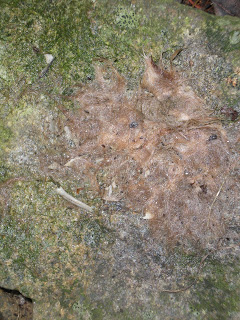Throughout the semester, you will be developing your observation skills, sharpening your awareness, challenging yourself to deepen your capacity for critical thinking and pattern recognition while integrating your personal experience with the texts we will read in class through weekly written reflections. Your Sit Spot will be a spot on campus that you will get to know intimately. Your weekly visits to this place in different seasons, weather, times of day and mental state will facilitate both a deep knowledge of place and yourself.
In a recent National Geographic article, journalist Michael Finkel spent some time in Tanzania with the Hadza, one of the rare remaining communities of people living a hunter-gatherer lifestyle. Finkel wrote of his arrival in the bush, "...there was [tribal elder] Onwas's son Ngaola waiting for us. Apparently, Onwas had noted the stages of the moon, and when he felt enough time had passed, he sent his son to the tree. I asked Ngaola if he'd waited a long time for me. 'No,' he said. 'Only a few days.' " A few days! Can you imagine waiting in one place for several days? It seems like most of us start to get antsy after just a few minutes of waiting, preferring to sink into a world of digital distraction or compulsive thought. Can we sit undistracted with our senses wide open for even five minutes? Ngaola and the rest of the Hadza have no choice. A high level of focus and multi-sensory awareness as well as a finely honed capacity for pattern recognition are completely necessary for their survival. Mental agitation, distraction and tension are “luxuries” the Hadza cannot afford. Ngaola is native to the area in which he lives, but his being native has nothing to do with the color of his skin or being part of what we now call an “indigenous” people. Being native means having developed enough awareness to know a place so intimately that over time one understands the layers of interconnectedness and the patterns of nature enough to live naturally in that place.
My year in California was a doorway into starting to develop the awareness necessary to be native to a place. I learned to start seeing the farm I lived on through new eyes, eyes that were open to a whole world that I had trained myself to overlook or disregard through years of distraction and disembodiment. This year, when I returned to Richmond, I realized that although I had lived here for five years before, I was nowhere close to being native to the place. Sure, I knew how to get around the campus, had a sense of what college life was like, and had lots of memories, but as I look around now, I realize that in my years here, I had somehow almost completely overlooked the physical world, a world teaming with life in every inch, every inch intimately connected to the rest. Now I am starting to look around, like a curious child, eager to explore the mysteries…
Through your time at your Sit Spot, you will start to become native to the Richmond campus. Over the course of the semester, you will be challenged to explore your world inside and out through developing sensory awareness, mapping skills, observation, pattern recognition, and a relaxed, still mind. You will also start to develop a relationship with the natural world by getting to know some of the plants, trees, and animals (yes, including those curious bipedal hominids walking all over the place).
-Geoff Cox
Guidelines
Visiting your spot: You will spend at least 1 hour a week, during one or two visits, sitting quietly with all electrical devices turned off at your spot practicing the sensory awareness that will be explored throughout the semester as well as any particular assignments for that week.
Getting to and from your spot: The sit spot practice starts the moment you step out the door. Once through the door, you will start practicing expanding into your sensory awareness, calming your mind and paying attention. From that first moment out the door, you are encouraged to tap into your inner curious child, making observations, asking question and exploring possibilities. And remember, you will have to be paying close enough attention to make sure no other Lodgers see you, because…
Keeping your sit spot secret: Throughout the semester, you will be challenged to keep your sit spot a secret from all other Lodgers. Some spots will be harder to keep hidden than others and may require some creativity.
Finding other Lodger’s sit spots: You are also challenged to find the location of other Lodgers’ sit spots and take a picture of them at their spot without them noticing for extra credit. If you discover the location of another person’s sit spot, you are required to keep their spot a secret as well. Although teamwork is an important aspect of the Earth Lodge experience, any photos taken as a result of someone intentionally revealing their sit spot will not be considered for extra credit.



 In addition to meeting some of the local plants, we also noticed the tracks of some of the local animals. After tracking the elusive Sarah across the sand, we started looking around to see what other animal tracks we might find. Nikki spotted the prints of a raccoon in the mud while we crossed a pipeline bridge.
In addition to meeting some of the local plants, we also noticed the tracks of some of the local animals. After tracking the elusive Sarah across the sand, we started looking around to see what other animal tracks we might find. Nikki spotted the prints of a raccoon in the mud while we crossed a pipeline bridge.








